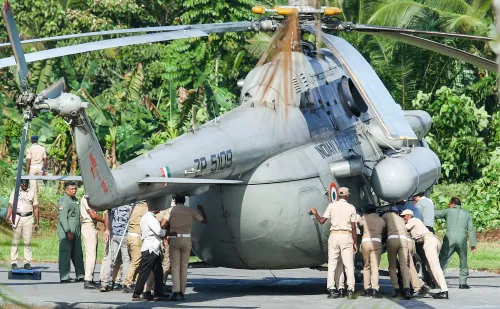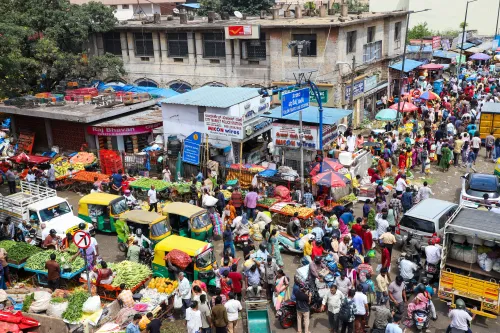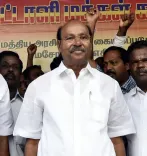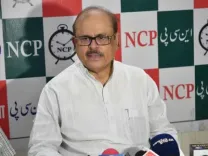Has Delhi’s Air Pollution Reached Dangerous Levels This Diwali?
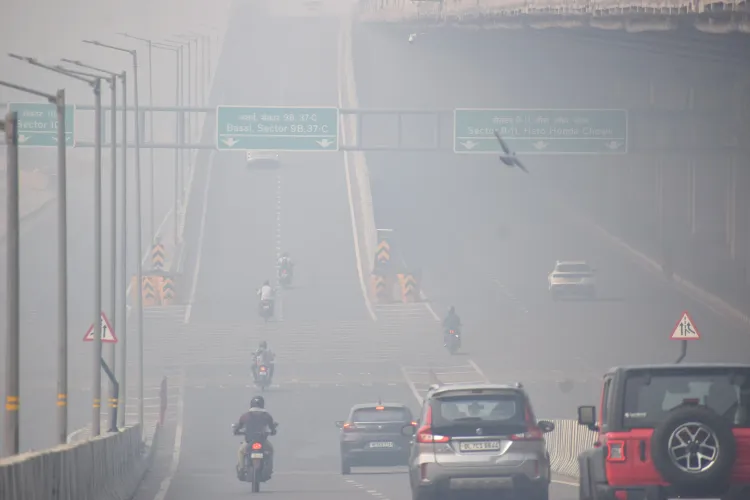
Synopsis
Key Takeaways
- PM2.5 levels averaged 488 µg/m3 post-Diwali in Delhi.
- Firecracker emissions are the leading cause of pollution spikes.
- Pollution levels typically double or triple during the festival.
- Cooler temperatures and calm winds contribute to poor air dispersion.
- There has been a 77% decline in stubble burning incidents in 2025.
New Delhi, Oct 21 (NationPress) This Diwali witnessed an alarming spike in pollution levels within the national capital, as PM2.5 concentrations soared to an average of 488 µg/m3 following the festival of lights.
An investigation conducted by Climate Trends, utilizing data from the Central Pollution Control Board (CPCB) spanning 2021-2025, revealed that Delhi's air quality deteriorated significantly on Diwali, with PM2.5 levels averaging 488 µg/m3 after the festivities.
The five-year study consistently indicated a pollution surge associated with Diwali, where PM2.5 levels typically increased by two to three times during the celebrations, with impacts lingering into the following day.
Emissions from firecrackers remain the primary factor contributing to the sudden drop in air quality in Delhi during this festive season. But what exactly is particulate matter? Airborne particulate matter (PM) is not a singular pollutant; it is a mix of various chemical constituents.
This complex amalgamation consists of solid particles and aerosols, including tiny droplets of liquid, dry solid fragments, and solid cores enveloped in liquid.
The analysis confirms a distinct and ongoing increase in PM2.5 levels around Diwali, typically doubling or tripling from conditions prior to the festival and persisting into the subsequent day.
During the cooler nights and calm winds typical of early winter, temperature inversion can occur, limiting vertical air mixing and trapping pollutants near the ground.
By monitoring hourly fluctuations in PM2.5 and temperature before, during, and after Diwali, a clearer understanding of short-term air quality degradation and its correlation with local weather patterns emerges.
Experts assert that when PM2.5 and temperature data are assessed together, they reveal a consistent trend: High emissions from fireworks and low nighttime temperatures jointly elevate PM2.5 concentrations.
The pronounced spikes in PM2.5 levels following Diwali highlight both sustained emissions and inadequate atmospheric dispersion. Over the five-year span, a slight reduction in peak PM2.5 levels has been noted, indicating gradual improvement, likely due to public awareness efforts, firecracker restrictions, and enhanced pollution control initiatives. Notably, stubble burning incidents have seen a remarkable 77% decline in 2025 compared to the previous year.
In response to these findings, S.K. Dhaka, a professor at Rajdhani College, University of Delhi, indicated that the elevated PM2.5 levels can largely be attributed to local firecracker emissions throughout various sectors of the city during this auspicious night.
“Wind speeds are considerably low, under 1 m/s, predominantly blowing from the north and northwest, which limits the transportation of pollutants across short distances during the hours of firecracker discharge,” he stated.
Professor Dhaka noted that the use of green firecrackers has rapidly increased particulate matter levels and highlighted that the pollution is primarily local, not influenced by external sources.
“This indicates a need to assess the quality of green firecrackers,” he emphasized.
Aarti Khosla, Director of Climate Trends, expressed disappointment that even after years of experiencing the detrimental effects of firecracker combustion during Diwali, there remains a denial of reality and a repetition of the same mistakes.
“As individuals, we often fail to recognize how significantly this pollution affects health, especially among vulnerable groups such as children, pregnant women, the elderly, and those with pre-existing health conditions,” stated Director Khosla.

